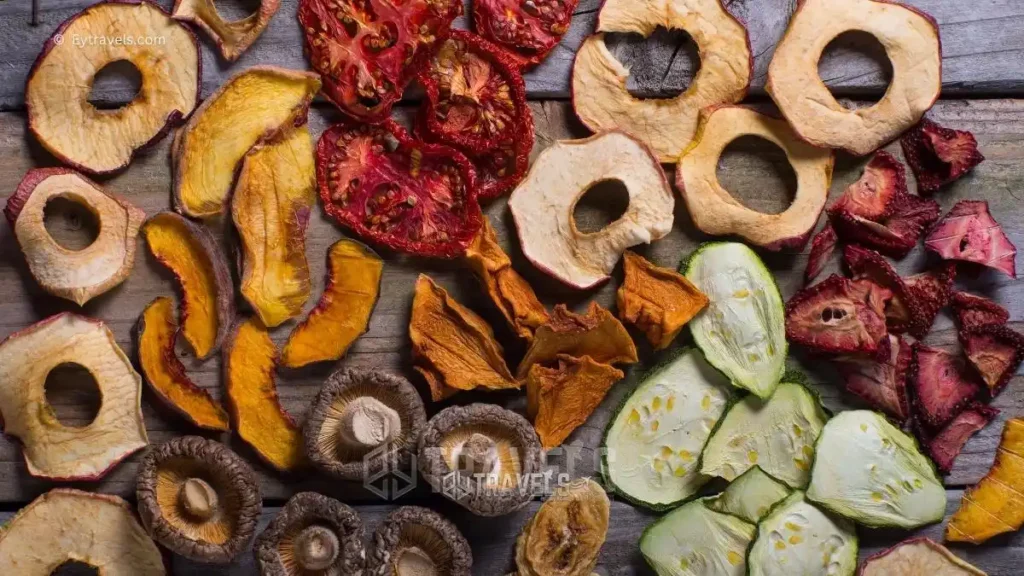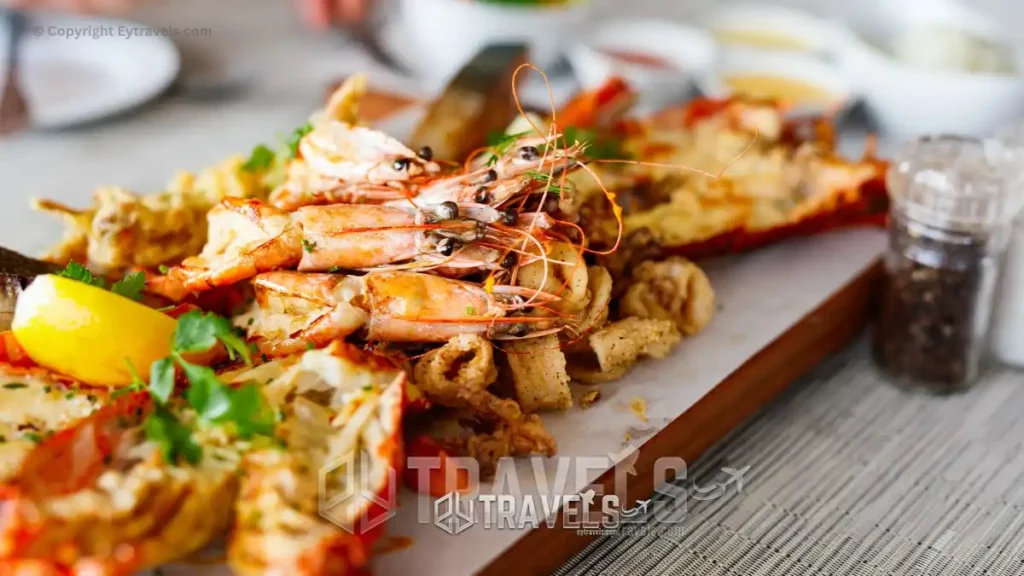How to Dehydrate Food for Camping? Easy Guide
You Won't Believe How Easy and Delicious dehydrated Camping Meals Can be!
Heading out on a camping trip can be an adventure of a lifetime, filled with stunning landscapes and thrilling outdoor activities. But when it comes to food, the options may seem limited to soggy sandwiches and canned beans. Fear not, intrepid campers! In this article, we'll show you a game-changing technique that will transform your camping meals from bland to gourmet: how to dehydrate food for camping.
Imagine enjoying a steaming bowl of homemade beef stew or savoring mouthwatering mango slices while sitting under the starry night sky – all thanks to the magic of dehydration.
The Culinary Adventure of Dehydrated Camping Meals
Embarking on a camping trip is not just about communing with nature; it's a culinary adventure waiting to unfold. Discovering the art of dehydrating food adds a new dimension to the camping experience.
Benefits of Dehydrated Food for Campers
Lightweight and Portable Nutrition
Carrying a backpack laden with dehydrated meals is a revelation. The weight is significantly reduced, allowing campers to venture further without the burden of heavy provisions.
Extended Shelf Life and Reduced Waste
Dehydrated food not only lightens the load but extends the shelf life of ingredients. It's a sustainable practice, minimizing waste and ensuring that every meal is a fresh, flavorful experience.
Understanding the Basics of Dehydration
Dehydration: Preserving Nature's Bounty
1. Dehydration as an Ancient Preservation Method

For centuries, dating back through the annals of time, the art of dehydration has stood as a steadfast and dependable technique for the preservation of food. Its enduring presence in the tapestry of culinary history serves as a resounding testament to its unwavering effectiveness and timeless relevance.
2. Science Behind Dehydration: Removing Moisture for Longevity
Delve into the science behind dehydration—the removal of moisture. This process inhibits the growth of microorganisms, ensuring that food remains edible for extended periods.
Choosing the Right Foods for Dehydration
1. High-Water Content vs. Low-Water Content Foods
Understanding the water content of foods is crucial. High-water content foods require more thorough dehydration to achieve the desired preservation.
2. Optimal Texture and Flavor Retention
Choosing foods with textures and flavors that withstand dehydration ensures the end product is not only nutritious but a delight to consume.
Essential Equipment for Dehydrating
Dehydrators: The Heart of the Process
1. Understanding Dehydrator Types and Mechanisms
Investing in the right dehydrator is paramount. Examine the different types and mechanisms available to choose one that aligns with your camping culinary aspirations.
2. Features to Consider When Choosing a Dehydrator
Temperature control, size, and ease of cleaning are essential features to evaluate when selecting a dehydrator. A well-chosen dehydrator streamlines the process.
Alternatives: Sun-Drying and Oven Dehydration
1. Harnessing Solar Power for Dehydration
For the eco-conscious camper, harnessing solar power for food dehydration is a sustainable alternative. Explore the nuances of sun-drying.
2. Oven Dehydration: Practical Tips for Success
When a dehydrator is unavailable, the oven becomes a viable option. Uncover practical tips for successful dehydration using a conventional oven.
Preparing Food for Dehydration
Proper Cleaning and Cutting Techniques
1. Sanitization for Food Safety
Maintaining food safety begins with proper sanitization. Learn effective cleaning techniques to ensure the health and well-being of campers.
2. Slicing and Dicing: Size Matters
Achieving uniformity in size facilitates even dehydration. Master the art of slicing and dicing for optimal results.
Pre-Treating for Flavor Enhancement
1. Marinades and Seasonings
Elevate the flavor profile of dehydrated meals with strategic marinades and seasonings. Pre-treating adds a depth of taste to the camping culinary experience.
2. Blanching for Color and Texture Preservation
Preserve the vibrant colors and textures of vegetables by incorporating blanching into the preparation process. Blanching is a culinary secret for maintaining the visual appeal of dehydrated ingredients.
Dehydrating Fruits: Nature's Candy for Campers
Exploring Flavorful Dehydrated Fruit Options
1. Mango Slices: Tropical Sweetness on the Trail
Mango slices, dehydrated to perfection, offer a burst of tropical sweetness that transports campers to sun-drenched paradises.
2. Apple Chips: Crispy and Naturally Sweet
Crispy apple chips are a classic snack, combining natural sweetness with a satisfying crunch. Discover the technique behind creating this camper's delight.
Tips for Perfectly Dehydrated Fruits
1. Achieving the Ideal Texture
The secret to dehydrating fruits lies in achieving the ideal texture. Learn the nuances of time and temperature to create fruits that are both chewy and succulent.
2. Storage Considerations for Dehydrated Fruits
Proper storage is paramount for maintaining the freshness of dehydrated fruits. Explore container options and environmental factors that impact storage longevity.
Dehydrating Vegetables: Nutrient-Packed Trail Snacks
Diverse Vegetable Options for Dehydration
1. Bell Peppers: Colorful and Crunchy
Dehydrated bell peppers add a burst of color and crunch to camping meals. Uncover the art of dehydrating bell peppers to enhance both the visual appeal and nutritional value of your outdoor cuisine.
2. Zucchini Chips: A Savory Delight
Zucchini chips, when dehydrated, transform into a savory delight—crisp, flavorful, and a perfect addition to the camper's snack repertoire. Explore the steps to achieve zucchini perfection through dehydration.
Maintaining Nutritional Integrity During Dehydration
1. Retaining Vitamin and Mineral Content
Preserving the nutritional value of dehydrated vegetables requires a delicate balance. Discover methods to retain essential vitamins and minerals during the dehydration process.
2. Dehydrated Vegetables in Culinary Applications
Elevate your camping culinary creations by incorporating dehydrated vegetables into diverse recipes. From stews to stir-fries, explore the versatility of dehydrated veggies.
Dehydrating Proteins: Power-Packed Camping Meals
Lean Meats: Fuel for Outdoor Enthusiasts
1. Beef Jerky: The Classic Trail Protein
Beef jerky, an iconic trail snack, is a powerhouse of protein. Uncover the techniques for creating tender, flavorful beef jerky that fuels outdoor adventures.
2. Chicken Strips: Versatile and Satisfying
Dehydrated chicken strips offer versatility in camping cuisine. Learn how to achieve the perfect texture and flavor for these protein-packed strips.
Veggie Proteins for the Plant-Based Camper
1. Dehydrated Lentils: Protein-Packed and Lightweight
For plant-based campers, dehydrated lentils provide a protein-packed and lightweight alternative. Explore the preparation methods for dehydrated lentils that enhance their nutritional profile.
2. Tofu Jerky: A Vegan Trail Snack
Tofu jerky, a savory and satisfying vegan trail snack, introduces a plant-based protein option for campers. Dive into the unique process of dehydrating tofu to achieve jerky perfection.
Creating Dehydrated Meals: Culinary Masterpieces on the Trail
Combining Dehydrated Components for Balanced Meals
1. Crafting Dehydrated One-Pot Wonders
Master the art of creating one-pot wonders by strategically combining dehydrated components. These balanced meals provide convenience without compromising flavor.
2. Balancing Flavors and Nutrients in Dehydrated Meals
Achieving a harmonious balance of flavors and nutrients is the key to crafting dehydrated meals that not only sustain but delight the palate.
Dehydrated Soups and Stews: Warmth in a Lightweight Package
1. Creating Flavorful Broths for Dehydrated Soups
Discover the secrets to crafting flavorful broths that elevate dehydrated soups to a level of warmth and comfort on chilly camping nights.
2. Dehydrating Vegetables for Hearty Stews
Hearty stews become a reality on the trail by dehydrating vegetables. Explore the techniques to dehydrate veggies for robust and satisfying camping stews.
Tips for Efficient Dehydrating
Time and Temperature Guidelines
1. Understanding Dehydrating Timeframes
Different foods require different durations for optimal dehydration. Gain insights into the timeframes needed for various ingredients.
2. Optimal Temperature Settings for Different Foods
Temperature control is a critical factor in efficient dehydration. Learn about optimal temperature settings for different types of foods to ensure thorough drying without compromising quality.
Rotating Trays and Ensuring Even Dehydration
1. Preventing Uneven Drying with Tray Rotation
Uneven dehydration can lead to inconsistency in texture and flavor. Master the technique of tray rotation to ensure every piece receives uniform drying.
2. Troubleshooting Common Dehydrating Issues
Dealing with challenges is part of the dehydrating process. Equip yourself with troubleshooting skills to address common issues and achieve perfection in your dehydrated creations.
Proper Storage of Dehydrated Foods
Choosing the Right Containers
1. Mason Jars: A Classic Storage Solution
Mason jars, with their airtight seal, provide a classic and effective storage solution for dehydrated foods. Explore the benefits of using these jars for preserving freshness.
2. Vacuum-Sealed Bags: Preserving Freshness and Flavor
Vacuum-sealed bags offer an alternative storage solution, ensuring prolonged freshness and flavor retention for dehydrated foods. Learn the art of vacuum sealing for optimal results.
Shelf Life Considerations
1. Understanding Shelf Life Variations
Different factors influence the shelf life of dehydrated foods. Delve into these considerations to make informed decisions about storage duration.
2. Monitoring and Rotating Stored Dehydrated Foods
Regular monitoring and rotation of stored dehydrated foods are crucial practices for maintaining freshness. Discover how to implement these habits for an optimal camping pantry.
Rehydrating Techniques: Bringing Meals Back to Life

Water Ratios for Optimal Rehydration
1. Precision in Adding Water to Dehydrated Meals
Achieving the right water-to-food ratio is crucial for successful rehydration. Explore precision techniques to ensure your dehydrated meals come back to life with the perfect consistency.
2. Factors Affecting Rehydration Time
Various factors impact the time needed for rehydration. Understand these factors to plan your meals effectively and optimize the rehydration process.
Flavor Enhancements for Rehydrated Meals
1. Spices and Seasonings to Elevate Taste
Elevate the taste of rehydrated meals by incorporating a variety of spices and seasonings. Learn the art of balancing flavors to create a culinary delight on the trail.
2. Incorporating Fresh Ingredients on the Trail
While dehydrated meals offer convenience, the addition of fresh ingredients can enhance the overall dining experience. Explore creative ways to incorporate fresh elements into your campsite cooking.
Recap on How to Dehydrate Food for Camping
The mastery of dehydrating food empowers outdoor enthusiasts with culinary independence, allowing them to savor delicious, home-prepared meals even in the heart of nature.
In brief, the joy of indulging in wholesome, dehydrated camping meals transcends the limitations of traditional outdoor fare. Embrace the culinary adventure, and let dehydrated delights elevate your camping experience to new heights.






